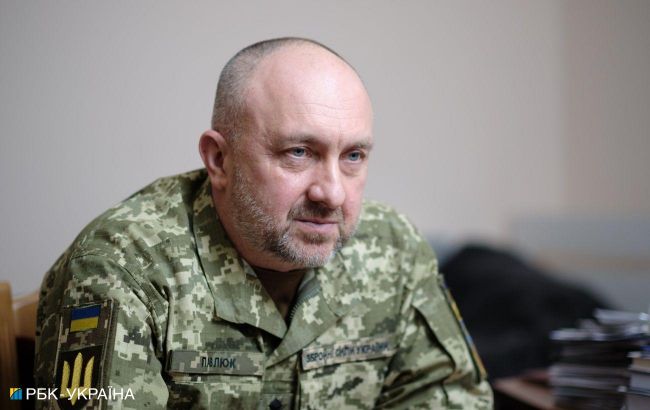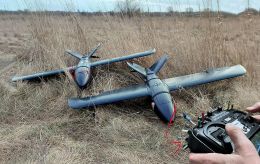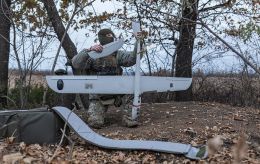Ground Forces Chief on Ukraine's preparation for full-scale aggression
 Photo: Oleksandr Pavlyuk, commander of the Ground Forces of the Ukrainian Armed Forces (Vitalii Nosach, RBC-Ukraine)
Photo: Oleksandr Pavlyuk, commander of the Ground Forces of the Ukrainian Armed Forces (Vitalii Nosach, RBC-Ukraine)
Representatives of the command of the Armed Forces of Ukraine noted in the fall of 2021 the very high probability of Russia launching a large-scale military aggression against our country, said the Commander of the Ground Forces of the Armed Forces of Ukraine, Lieutenant General Oleksandr Pavlyuk, in an interview with Radio Liberty.
The officer noted that he was appointed as the commander of the Joint Forces Operation in July 2021. After conducting an analysis in the fall, he understood the "very high probability of a full-scale war."
"It was still difficult to understand the scale, but that it would capture the territory of Luhansk and Donetsk regions - it was obvious. Because we analyzed the enemy's actions, his corresponding preventive measures, his reconnaissance functions, which he performed on the territory along the entire contact line, along the border," Pavlyuk said.
According to him, there were all indications that Ukrainian forces would encounter the enemy not only from the temporarily occupied areas of Donetsk and Luhansk regions from the L/DNR groups but also from the territory of Russia.
"Therefore, since the fall, we started taking certain actions to successfully meet and inflict maximum damage on the enemy. Understanding that the balance of forces and resources was and will be not in our favor, but we had no other options - we had to withstand because the whole of Ukraine was behind us. So, for five months, we prepared for the repulsion of full-scale aggression," said Lieutenant General.
He added that already in January-February 2022, "we received telegrams from the Main Directorate of Intelligence predicting that such a scenario was possible."
"And in February, we did everything possible to meet the enemy properly: all positions were maximally reinforced, all possible action scenarios were calculated, all reserves were moved - we conducted full-scale training at least twice, and there were many local exercises," Pavlyuk explained.
The officer noted that this played a "possibly decisive role."
"On the first day when strikes were delivered on all command centers, all control points, on all locations where our troops and warehouses were supposed to be concentrated - they (Russian forces, - Ed.) went into empty spaces," explained the Lieutenant General.
Beginning of the large-scale invasion of the Russian Federation and the defense of Kyiv and northern regions
After the start of the large-scale invasion by the Russian Federation into Ukraine, the first setback for the occupiers was the failure of the "ambitious plan" of the Russians to capture Kyiv in three days and march triumphantly down Khreshchatyk. The invaders failed to reach the Ukrainian capital because the battles ended in the defeat of elite Russian forces.
The enemy could not move due to the undermining of the dam by the Armed Forces of Ukraine and the flooding of the Irpin River. Moreover, the long columns of military equipment on the approaches to Kyiv became targets for Bayraktar drones and artillery. Without reserves, the occupiers found themselves virtually trapped, and the Ukrainian forces actively destroyed the reinforcements coming in the Sumy and Chernihiv regions.
By April 2, 2022, the Armed Forces of Ukraine liberated the entire Kyiv and Chernihiv regions. On the 47th day of the war, the Sumy region was also liberated. The Russians explained their retreat as a "gesture of goodwill," but as they withdrew from the occupied suburbs of the capital, they left behind evidence of mass war crimes. In Bucha alone, the occupiers killed over 400 civilians.

